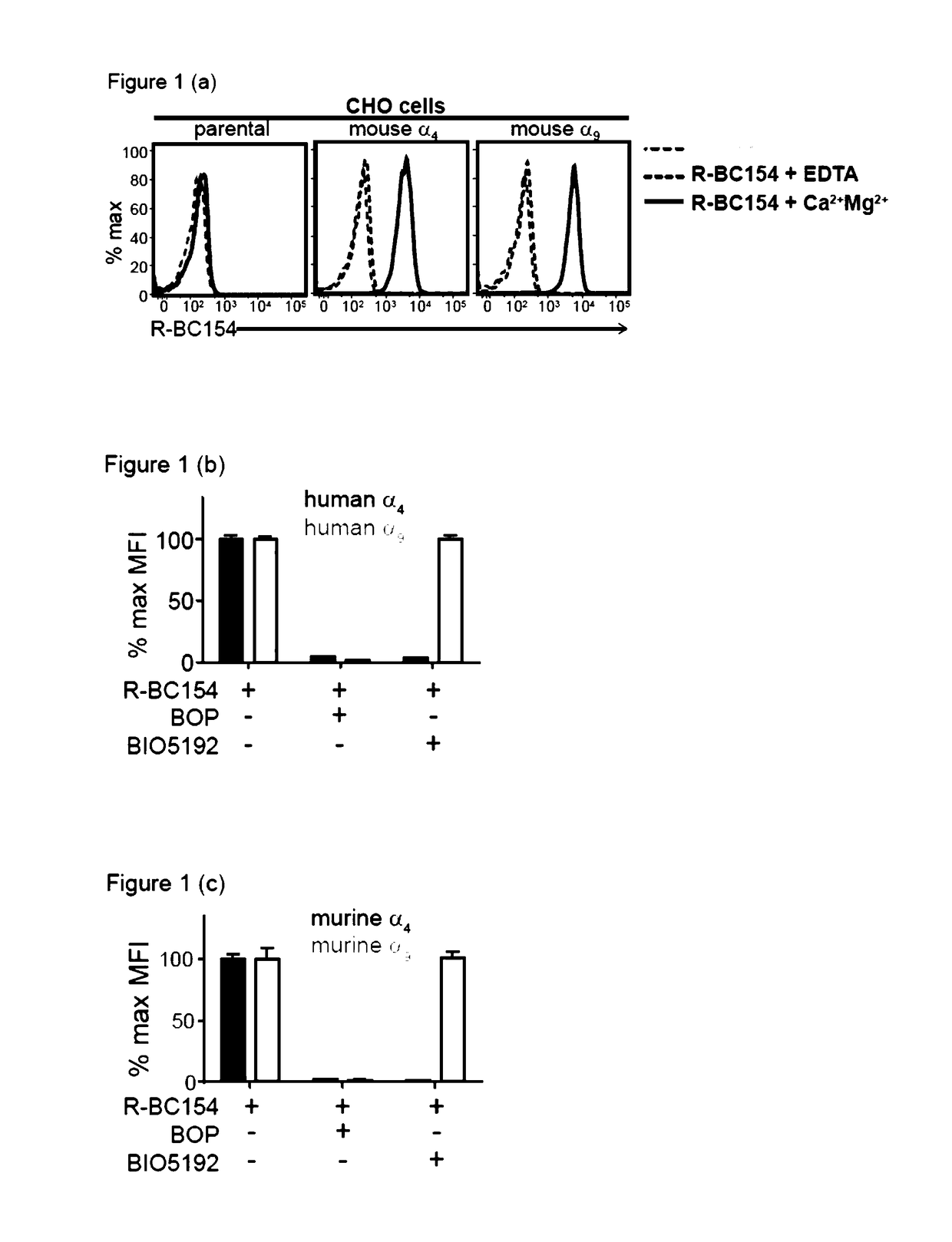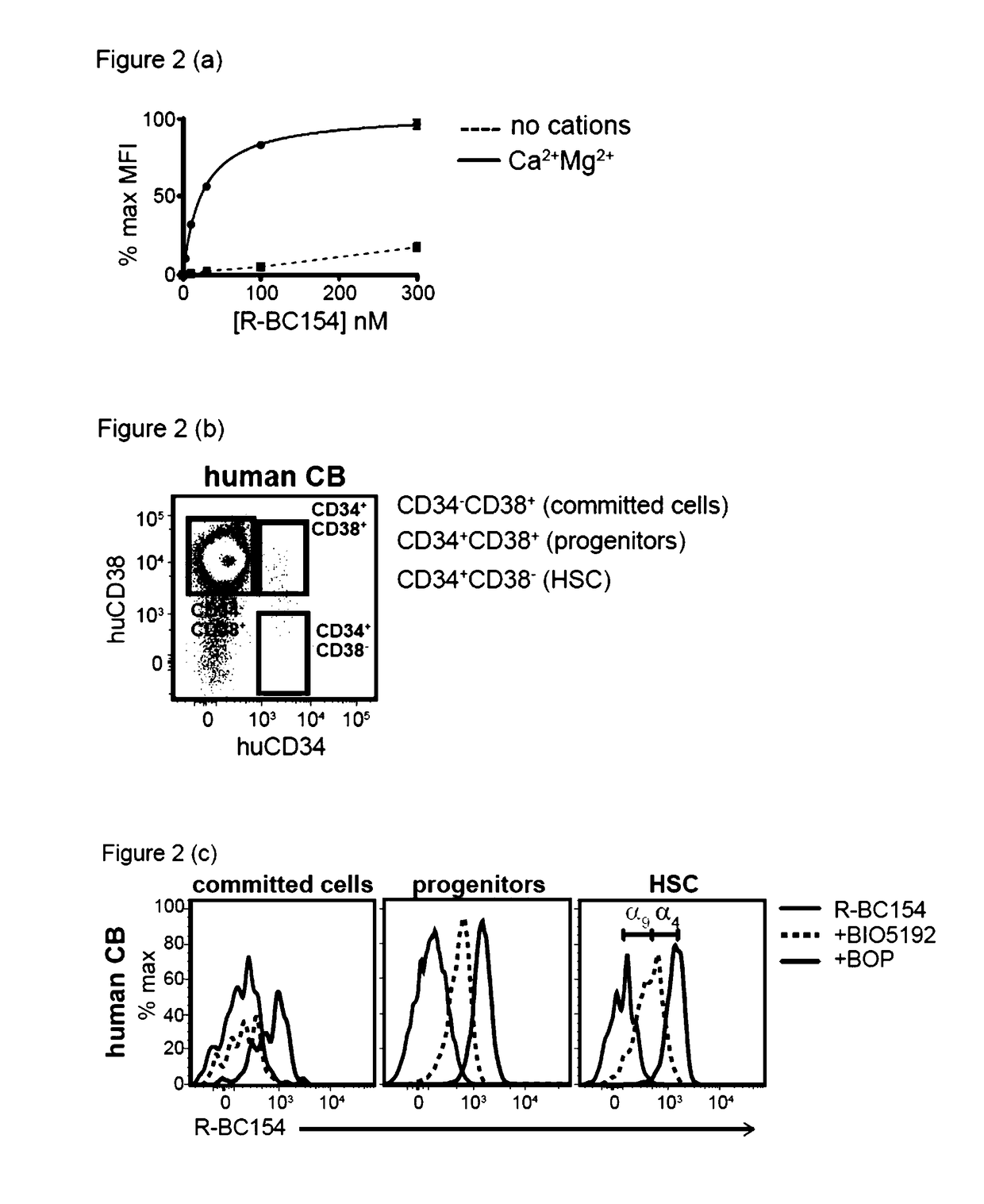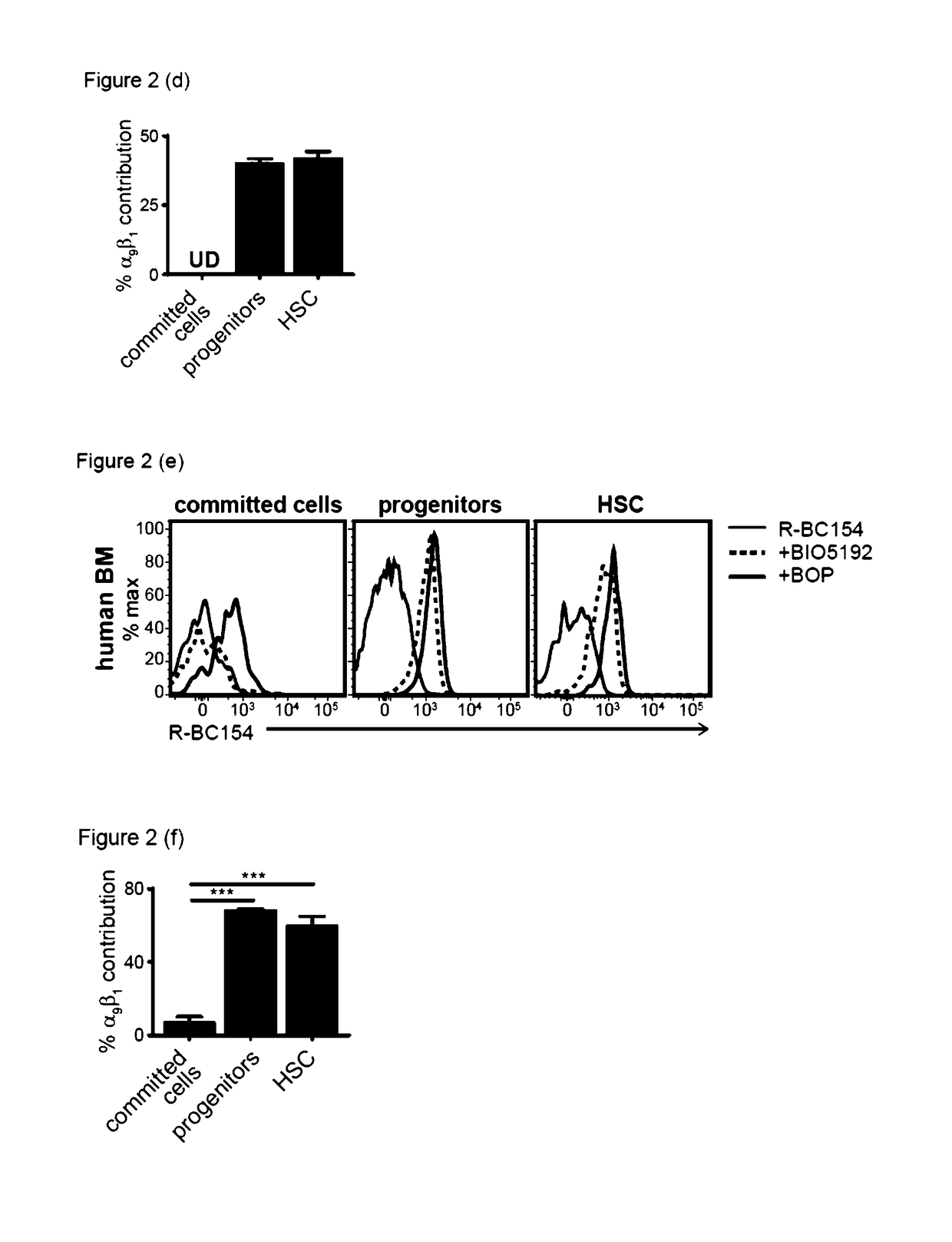Dislodgement and release of hsc using alpha 9 integrin antagonist and cxcr4 antagonist
a technology of cxcr4 and hsc, which is applied in the direction of unknown materials, organic active ingredients, drug compositions, etc., can solve the problems of g-csf ineffective in a large cohort of patients, several side effects, and spleen enlargement, and achieve the effect of altering the susceptibility of hs
- Summary
- Abstract
- Description
- Claims
- Application Information
AI Technical Summary
Benefits of technology
Problems solved by technology
Method used
Image
Examples
example 1a
n of N-(Benzenesulfonyl)-L-prolyl-L-O-(1-pyrrolidinyl carbonyl)tyrosine (BOP)
[0422]Synthesis of BOP began from the dipeptide 26, as shown in the following Scheme 1:
[0423]Deprotection of the tert-butyl protecting group of 26 using trifluoroacetic acid at 0° C. provided phenol 27, which was used in the next step, after aqueous work-up, without further purification. Reaction of phenol 27 with 1-pyrrolidinecarbonyl chloride proceeded smoothly in the presence of potassium carbonate to provide carbamate 28 in good yield (74%) over two steps. Hydrogenolysis of the Cbz protecting group was complete within 3 hours, and the resulting amine was obtained in excellent yield (85%) after flash chromatography. Amine 29 was then reacted with benzenesulfonyl chloride in the presence of base to give the sulfonamide 30 in excellent yield (96%) after flash chromatography. Finally, the methyl ester moiety of 30 was saponified using sodium hydroxide, followed by ion-exchange on Amberlyst resin, to provide...
example 1b
n of R-BC154 (IXb)
[0431]Compound IXb (R-BC154), which lacks the PEG-spacer was also synthesised, as shown in the following Scheme 2:
[0432]Thus, hydrolysis of the methyl ester 18 with NaOH gave the deprotected azide inhibitor 23, which was subsequently reacted with N-propynyl sulforhodamine B 24 in the presence of CuSO4, sodium ascorbate and TBTA to give the fluorescent labelled compound of formula IXb (R-BC154) in 43% yield after purification by HPLC.
[0433]By way of exemplification the actual reaction conditions for the formation of fluorescently labelled BOP derivative IXb, starting from methyl ester 18 is herein provided.
Step 1: (S)-2-((2S,4R)-4-Azido-1-(phenylsulfonyl)pyrrolidine-2-carboxamido)-3-(4-((pyrrolidine-1-carbonyl)oxy)phenyl)propanoic acid (23)
[0434]The methyl ester 18 (420 mg, 0.737 mmol) in EtOH (10 mL) was treated with 0.2 M NaOH (4.05 mL, 0.811 mmol) and stirred at rt for 1 h. The mixture was concentrated under reduced pressure to remove EtOH and the aqueous phase a...
example 4
inding of Compound R-BC154 (IXb) to Bone Marrow HSC and Progenitor Cells
[0441]The in vitro binding data demonstrated that R-BC154 (IXb) is a high affinity α4β1 and α9β1 integrin antagonist, whose binding activity is highly dependent on integrin activation. This example tests whether R-BC154 (IXb) could be used in in vivo binding experiments to investigate α9β1 / α4β1 integrin activity on defined populations of HSC. To date, assessing integrin activity on HSC has relied primarily on in vitro or ex vivo staining of bone marrow cells or purified HSC using fluorescent labelled antibodies. Whilst ex vivo staining provides confirmation of integrin expression by HSC, investigation of integrin activation in their native state within bone marrow can only be determined through in vivo binding experiments, as the complex bone marrow microenvironment cannot be adequately reconstructed in vitro.
[0442]To assess whether R-BC154 (IXb) and this class of N-phenylsulfonyl proline-based peptidomimetics c...
PUM
| Property | Measurement | Unit |
|---|---|---|
| time | aaaaa | aaaaa |
| time | aaaaa | aaaaa |
| time | aaaaa | aaaaa |
Abstract
Description
Claims
Application Information
 Login to View More
Login to View More - R&D
- Intellectual Property
- Life Sciences
- Materials
- Tech Scout
- Unparalleled Data Quality
- Higher Quality Content
- 60% Fewer Hallucinations
Browse by: Latest US Patents, China's latest patents, Technical Efficacy Thesaurus, Application Domain, Technology Topic, Popular Technical Reports.
© 2025 PatSnap. All rights reserved.Legal|Privacy policy|Modern Slavery Act Transparency Statement|Sitemap|About US| Contact US: help@patsnap.com



